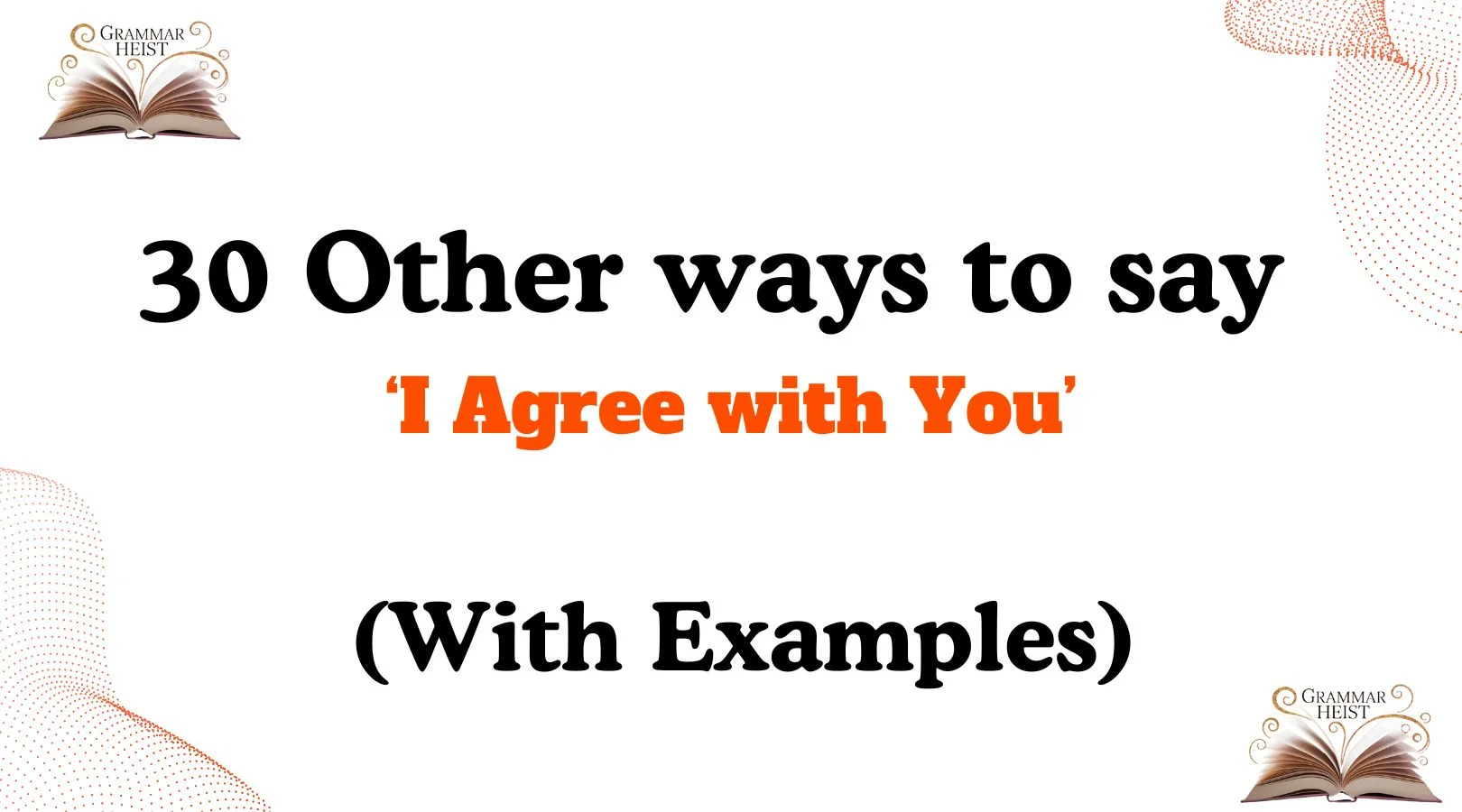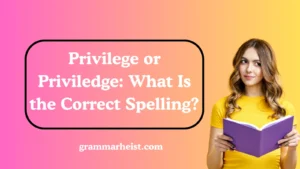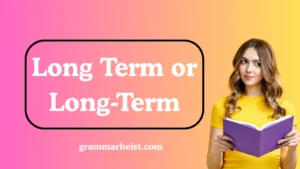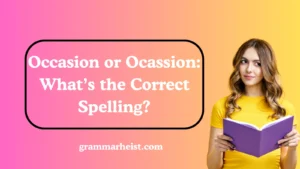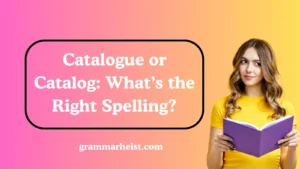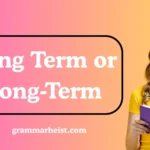When you truly want to connect with someone, the words you choose matter deeply. Saying “I agree with you” is a simple yet powerful way to show understanding, support, and connection. But sometimes, repeating the same phrase can sound flat or robotic. That’s why learning different ways to say “I agree with you” can help make your message feel more personal, meaningful, and genuine.
In this article, you’ll discover 30 thoughtful alternatives, along with examples, tones, and simple explanations. Whether you’re in a professional meeting, casual conversation, or emotional moment, these phrases can help you express your agreement in a warm and impactful way.
What Does “I Agree with You” Mean?
Saying “I agree with you” means you share the same opinion, understand the point, or support what someone else is saying. It’s a way to build trust, show connection, and strengthen the bond between people in both personal and professional conversations.
It can express:
- Mutual understanding
- Emotional support
- Alignment of thoughts or values
Is It Professional/Polite to Say “I Agree with You”?
Yes, “I agree with you” is a polite and professional phrase. It’s often used in meetings, team discussions, or respectful debates to show collaboration and openness. However, using different expressions can make your language sound more natural and engaging.
Pros or Cons of Saying “I Agree with You”
Pros:
- Shows support and understanding
- Builds trust and connection
- Works well in professional and personal conversations
Cons:
- May sound repetitive if overused
- Lacks emotional depth in some contexts
- Doesn’t always show why you agree
Synonyms For “I Agree with You”
- Absolutely
- Exactly
- You’re right
- I couldn’t agree more
- That’s so true
- I feel the same way
- I’m with you on that
- That makes sense
- I agree completely
- I share your view
- I think so too
- You took the words out of my mouth
- We’re on the same page
- No doubt about it
- I’m on board
- That’s exactly how I see it
- That’s true
- You’re absolutely right
- I second that
- Agreed
- I feel exactly the same
- I’m in favor
- That’s a valid point
- I couldn’t have said it better
- That’s right
- We think alike
- Yes, that’s it
- Totally
- You read my mind
- You nailed it
1. “Absolutely”
Scenario: You’re in a team meeting and want to strongly support a colleague’s idea.
Examples:
- “Absolutely, that makes perfect sense.”
- “Absolutely, I was thinking the same thing.”
- “Absolutely, I couldn’t agree more.”
Tone: Strong, confident, positive.
Explanation: This word expresses full agreement and works perfectly in both formal and informal settings.
2. “Exactly”
Scenario: A friend shares their opinion, and it matches your own thoughts.
Examples:
- “Exactly, that’s how I feel too.”
- “Exactly, you got it.”
- “Exactly, that’s the point I was trying to make.”
Tone: Affirmative, friendly.
Explanation: “Exactly” is great when you want to show precise alignment with someone’s statement.
3. “You’re right”
Scenario: During a discussion, you realize the other person made a valid point.
Examples:
- “You’re right, that’s true.”
- “You’re right, I didn’t think of it that way.”
- “You’re right, that’s a better approach.”
Tone: Honest, respectful.
Explanation: Simple yet powerful, this phrase shows acknowledgment of the other person’s correctness.
4. “I couldn’t agree more”
Scenario: A close friend shares a strong opinion that fully matches yours.
Examples:
- “I couldn’t agree more, that’s exactly it.”
- “I couldn’t agree more, you said it perfectly.”
- “I couldn’t agree more, 100% true.”
Tone: Warm, enthusiastic.
Explanation: This phrase expresses total alignment and is perfect for emphasizing agreement.
5. “That’s so true”
Scenario: In a casual conversation, someone says something relatable.
Examples:
- “That’s so true, I’ve experienced that too.”
- “That’s so true, people don’t talk about it enough.”
- “That’s so true, couldn’t have said it better.”
Tone: Friendly, conversational.
Explanation: A relaxed and natural way to show agreement, especially in informal talks.
6. “I feel the same way”
Scenario: Someone shares their emotions or beliefs.
Examples:
- “I feel the same way, honestly.”
- “I feel the same way, you’re not alone.”
- “I feel the same way, it’s exactly how I think.”
Tone: Empathetic, warm.
Explanation: This phrase adds emotional depth, showing personal connection.
7. “I’m with you on that”
Scenario: A colleague makes a point you support.
Examples:
- “I’m with you on that, it’s the right move.”
- “I’m with you on that, 100%.”
- “I’m with you on that, let’s make it happen.”
Tone: Supportive, confident.
Explanation: This phrase emphasizes solidarity and team spirit.
8. “That makes sense”
Scenario: Someone explains their perspective logically.
Examples:
- “That makes sense, I agree.”
- “That makes sense, good point.”
- “That makes sense, now I see your view.”
Tone: Calm, thoughtful.
Explanation: Ideal for showing agreement after understanding a point clearly.
9. “I agree completely”
Scenario: You want to express total agreement in a respectful way.
Examples:
- “I agree completely, no doubts here.”
- “I agree completely, your point is valid.”
- “I agree completely, well said.”
Tone: Professional, firm.
Explanation: Strong and polite — suitable for meetings or serious discussions.
10. “I share your view”
Scenario: You want to align yourself with someone’s perspective.
Examples:
- “I share your view, it’s a fair point.”
- “I share your view, we’re on the same page.”
- “I share your view, totally.”
Tone: Respectful, formal.
Explanation: Great for professional settings where clarity matters.
11. “I think so too”
Scenario: Informal talk with a friend.
Examples:
- “I think so too, honestly.”
- “I think so too, I had the same thought.”
- “I think so too, exactly.”
Tone: Casual, friendly.
Explanation: A simple and natural way to agree.
12. “You took the words out of my mouth”
Scenario: Someone says exactly what you were about to say.
Examples:
- “You took the words out of my mouth, I agree.”
- “You took the words out of my mouth, that’s exactly it.”
- “You took the words out of my mouth, spot on.”
Tone: Playful, warm.
Explanation: A great way to show strong alignment with a personal touch.
13. “We’re on the same page”
Scenario: Team members discuss a shared goal.
Examples:
- “We’re on the same page, let’s move forward.”
- “We’re on the same page, I like this idea.”
- “We’re on the same page, no confusion here.”
Tone: Collaborative, supportive.
Explanation: Perfect for showing shared understanding in teamwork.
14. “No doubt about it”
Scenario: Someone states something undeniable.
Examples:
- “No doubt about it, you’re right.”
- “No doubt about it, I agree 100%.”
- “No doubt about it, that’s true.”
Tone: Strong, confident.
Explanation: Shows firm agreement with no hesitation.
15. “I’m on board”
Scenario: A project plan is shared.
Examples:
- “I’m on board, let’s do this.”
- “I’m on board, sounds great.”
- “I’m on board, you have my support.”
Tone: Supportive, team-oriented.
Explanation: Ideal when you want to agree and commit to something.
16. “That’s exactly how I see it”
Scenario: Discussing opinions with a friend.
Examples:
- “That’s exactly how I see it, couldn’t agree more.”
- “That’s exactly how I see it, great minds think alike.”
- “That’s exactly how I see it, spot on.”
Tone: Personal, warm.
Explanation: Shows deep alignment of views.
Read More:30 Other Ways to Say ‘Hey Everyone’ (With Examples)
17. “That’s true”
Scenario: A general conversation or simple chat.
Examples:
- “That’s true, good point.”
- “That’s true, I agree with you.”
- “That’s true, you’re right.”
Tone: Neutral, friendly.
Explanation: A short and versatile response.
18. “You’re absolutely right”
Scenario: Agreeing strongly with someone.
Examples:
- “You’re absolutely right, I was just thinking that.”
- “You’re absolutely right, no question about it.”
- “You’re absolutely right, I agree fully.”
Tone: Respectful, strong.
Explanation: A more emphatic version of “you’re right.”
19. “I second that”
Scenario: A group decision is being made.
Examples:
- “I second that, it’s a great idea.”
- “I second that, totally agree.”
- “I second that, let’s go with it.”
Tone: Supportive, formal/informal.
Explanation: Common in group discussions or meetings.
20. “Agreed”
Scenario: Quick response to a point made.
Examples:
- “Agreed, let’s do it.”
- “Agreed, that works.”
- “Agreed, 100%.”
Tone: Direct, concise.
Explanation: A short but clear way to show agreement.
21. “I feel exactly the same”
Scenario: Emotional or personal topic.
Examples:
- “I feel exactly the same, honestly.”
- “I feel exactly the same, you’re not alone.”
- “I feel exactly the same, we’re connected on this.”
Tone: Emotional, empathetic.
Explanation: Perfect for showing deep personal connection.
22. “I’m in favor”
Scenario: Agreeing to a proposal.
Examples:
- “I’m in favor, it’s a smart move.”
- “I’m in favor, let’s proceed.”
- “I’m in favor, no objections here.”
Tone: Formal, professional.
Explanation: Excellent in business or decision-making situations.
23. “That’s a valid point”
Scenario: A respectful debate.
Examples:
- “That’s a valid point, I agree with you.”
- “That’s a valid point, well argued.”
- “That’s a valid point, I see your logic.”
Tone: Respectful, diplomatic.
Explanation: A polite way to acknowledge agreement with reason.
24. “I couldn’t have said it better”
Scenario: Someone expresses your thoughts perfectly.
Examples:
- “I couldn’t have said it better, exactly my thoughts.”
- “I couldn’t have said it better, you nailed it.”
- “I couldn’t have said it better, well put.”
Tone: Warm, appreciative.
Explanation: Shows strong agreement and admiration for their words.
25. “That’s right”
Scenario: Simple, direct agreement.
Examples:
- “That’s right, I agree.”
- “That’s right, good point.”
- “That’s right, well said.”
Tone: Clear, supportive.
Explanation: A short and universal expression of agreement.
26. “We think alike”
Scenario: Discovering shared opinions with someone.
Examples:
- “We think alike, that’s exactly what I was going to say.”
- “We think alike, nice to know we’re on the same page.”
- “We think alike, that’s great.”
Tone: Friendly, personal.
Explanation: Builds connection and rapport.
27. “Yes, that’s it”
Scenario: When someone sums up what you were thinking.
Examples:
- “Yes, that’s it, exactly.”
- “Yes, that’s it, well said.”
- “Yes, that’s it, you nailed it.”
Tone: Light, conversational.
Explanation: Simple and positive.
28. “Totally”
Scenario: Casual agreement.
Examples:
- “Totally, I agree.”
- “Totally, makes sense.”
- “Totally, you’re right.”
Tone: Relaxed, friendly.
Explanation: Best for informal settings.
29. “You read my mind”
Scenario: Someone says exactly what you were thinking.
Examples:
- “You read my mind, I agree completely.”
- “You read my mind, perfect.”
- “You read my mind, exactly.”
Tone: Playful, warm.
Explanation: Adds a personal and light-hearted touch.
30. “You nailed it”
Scenario: Someone perfectly expresses a shared idea.
Examples:
- “You nailed it, couldn’t agree more.”
- “You nailed it, spot on.”
- “You nailed it, exactly.”
Tone: Cheerful, positive.
Explanation: Shows enthusiastic agreement and appreciation.
📝 Conclusion
Finding the right words to say “I agree with you” can make your conversations feel more personal, meaningful, and memorable. Instead of using the same phrase repeatedly, using these 30 thoughtful alternatives can help you express not just agreement but warmth, empathy, and connection.
Whether you’re at work, talking to a friend, or supporting someone emotionally, these phrases can help you sound more natural and engaged.

Mia Rose is a skilled language expert with a deep passion for helping individuals master the art of writing and communication. With years of experience in the field, Marie brings a thoughtful and tailored approach to grammar, style, and language improvement. Her goal is to empower others to express themselves with clarity, precision, and confidence in every written word.
